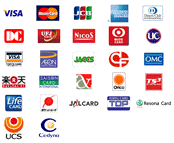What Is Another Word for Contractual?
Contracts are a significant part of any business agreement. A contract is a legally binding agreement between two parties that outlines the terms and conditions of their relationship. The word “contractual” is often used to describe anything related to contracts. However, this word can become repetitive and boring in written content. In this article, we will explore some alternate words for “contractual” that can help your writing sound more engaging and professional.
1. Agreement-Based
One possible alternative for contractual is “agreement-based.” This term emphasizes the idea that two or more parties have come to an understanding regarding the terms and conditions of their relationship. Instead of focusing on the legal aspect of the contract, “agreement-based” highlights the collaborative nature of the agreement.
Example: The company`s agreement-based approach fosters a sense of trust and mutual respect between the partners.
2. Covenantal
Another word that can be used instead of contractual is “covenantal.” This word has a religious connotation that emphasizes the commitment and responsibility required when entering into a contract. “Covenantal” also implies a deep emotional and moral obligation to fulfill the promises made in the agreement.
Example: The covenantal relationship between the two companies led to a successful joint venture.
3. Pact
“Pact” is a shorter, more concise alternative to contractual. This word emphasizes the idea of a binding agreement between two parties, without the legal connotations of “contractual.” “Pact” also adds a sense of urgency and importance to the agreement.
Example: The two parties sealed their pact with a handshake, signifying their commitment to fulfill their promises.
4. Understanding
“Understanding” is another excellent alternative to contractual. This word describes the agreement between two parties in a more casual and friendly way, emphasizing the positive relationship between them. Unlike “contractual,” which can sound formal and impersonal, “understanding” adds a human touch to the agreement.
Example: The two parties reached an understanding on the terms of their partnership, and they both felt confident about the future of their relationship.
Conclusion
Contracts are essential to any business agreement, but the word “contractual” can become repetitive and boring in written content. By using alternative words like “agreement-based,” “covenantal,” “pact,” and “understanding,” you can make your writing sound more engaging and professional. Each of these words adds a unique touch to the idea of a contract, emphasizing different aspects of the agreement, such as collaboration, commitment, urgency, and positive relationships. As a professional, you can help writers choose the right words to make their content more appealing and accessible to readers.













